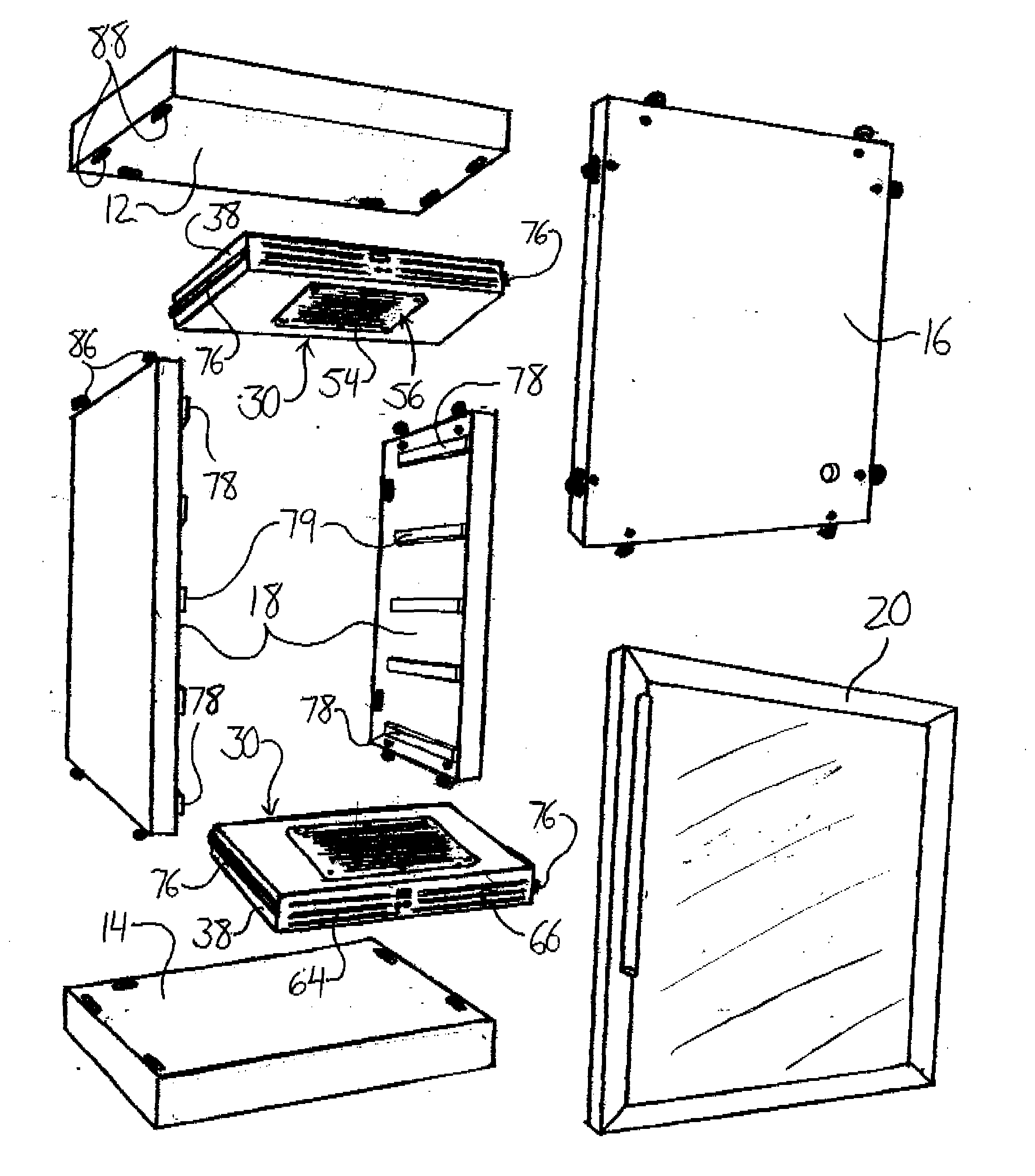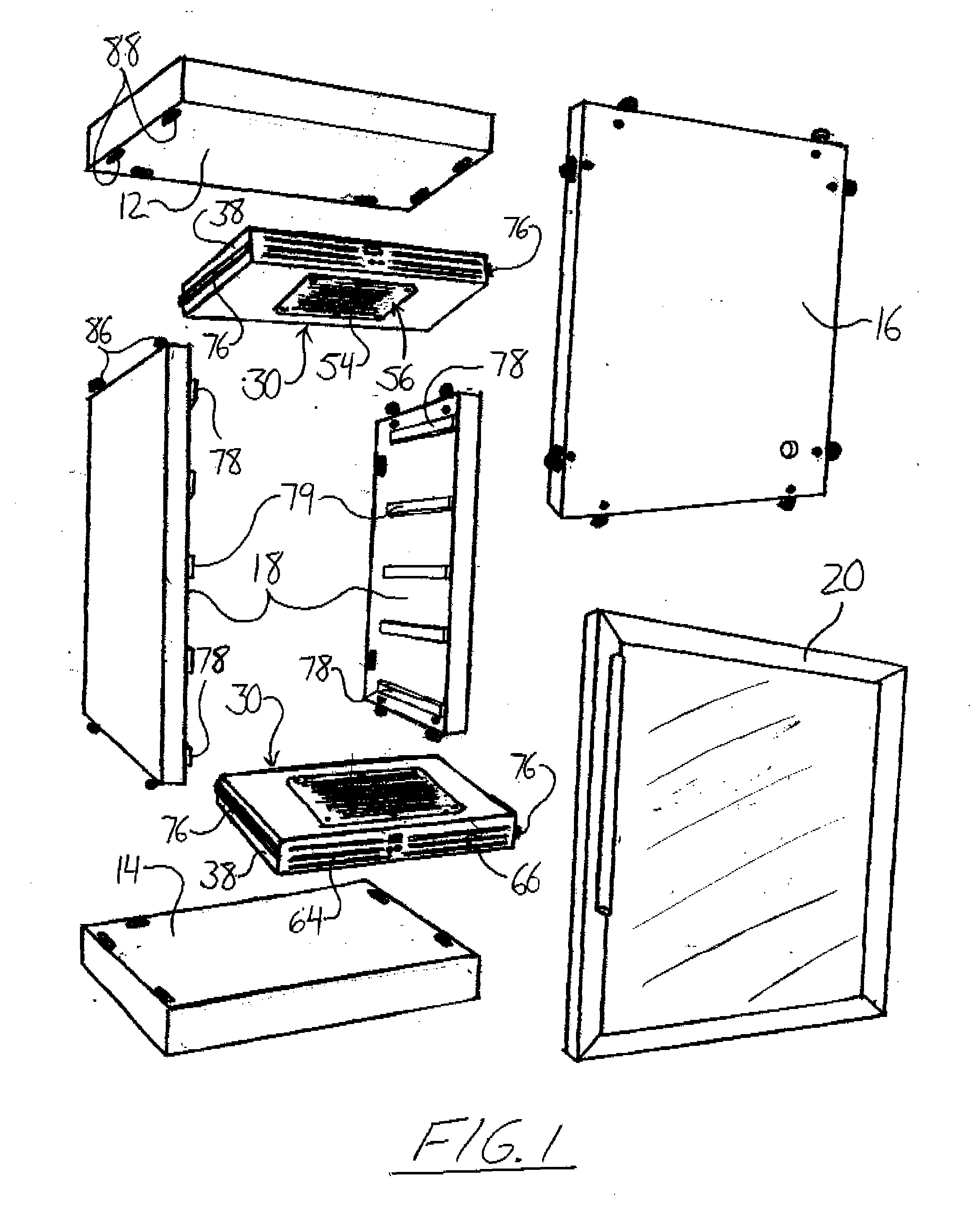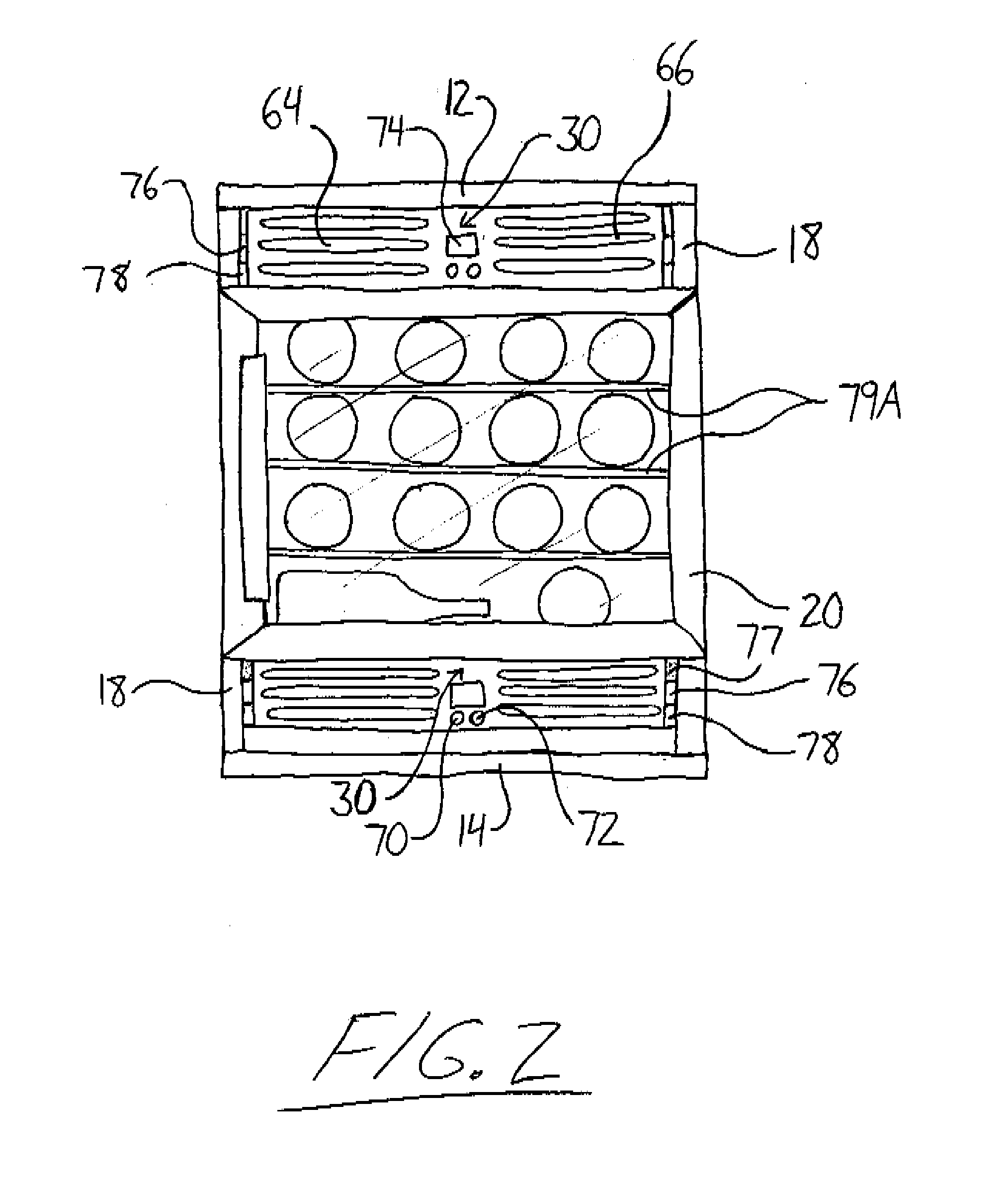Refrigerated cabinet and cooling module for same
a technology of refrigeration cabinet and cooling module, which is applied in the direction of gas/liquid distribution and storage, applications, lighting and heating apparatus, etc., can solve the problems of insufficient amount of cool generated through the peltier effect of currently available units, significant lifespan, and difficulty in necessary repair or maintenance, so as to reduce the space requirement, the effect of minimizing the height of the casing and full width
- Summary
- Abstract
- Description
- Claims
- Application Information
AI Technical Summary
Benefits of technology
Problems solved by technology
Method used
Image
Examples
Embodiment Construction
[0054]FIGS. 1 and 2 show a refrigerated cabinet 10 that makes use of slide-in cooling modules. The cabinet 10 features insulated panels forming a top wall 12, bottom wall 14, rear wall 16 and two sides walls 18 assembled and interconnected to define an interior having an open front end. The cooling modules 30 are arranged to slide into the cabinet from the open front end 10 at the top and bottom of the interior. The modules adjacent the top and bottom walls of the cabinet provide cooling from their bottom and top surfaces respectively to cool the air between the modules within the cabinet interior. A door 20 is pivotally mounted on the panels at the open front end to enable opening and closing of the cabinet by pivoting the door between open and closed positions in which the open front end is at least partially unobstructed and fully covered respectively. The cooling modules 30 are easy to install, easy to remove and allow the conversion of essentially any cabinet-like structure int...
PUM
 Login to View More
Login to View More Abstract
Description
Claims
Application Information
 Login to View More
Login to View More - R&D
- Intellectual Property
- Life Sciences
- Materials
- Tech Scout
- Unparalleled Data Quality
- Higher Quality Content
- 60% Fewer Hallucinations
Browse by: Latest US Patents, China's latest patents, Technical Efficacy Thesaurus, Application Domain, Technology Topic, Popular Technical Reports.
© 2025 PatSnap. All rights reserved.Legal|Privacy policy|Modern Slavery Act Transparency Statement|Sitemap|About US| Contact US: help@patsnap.com



